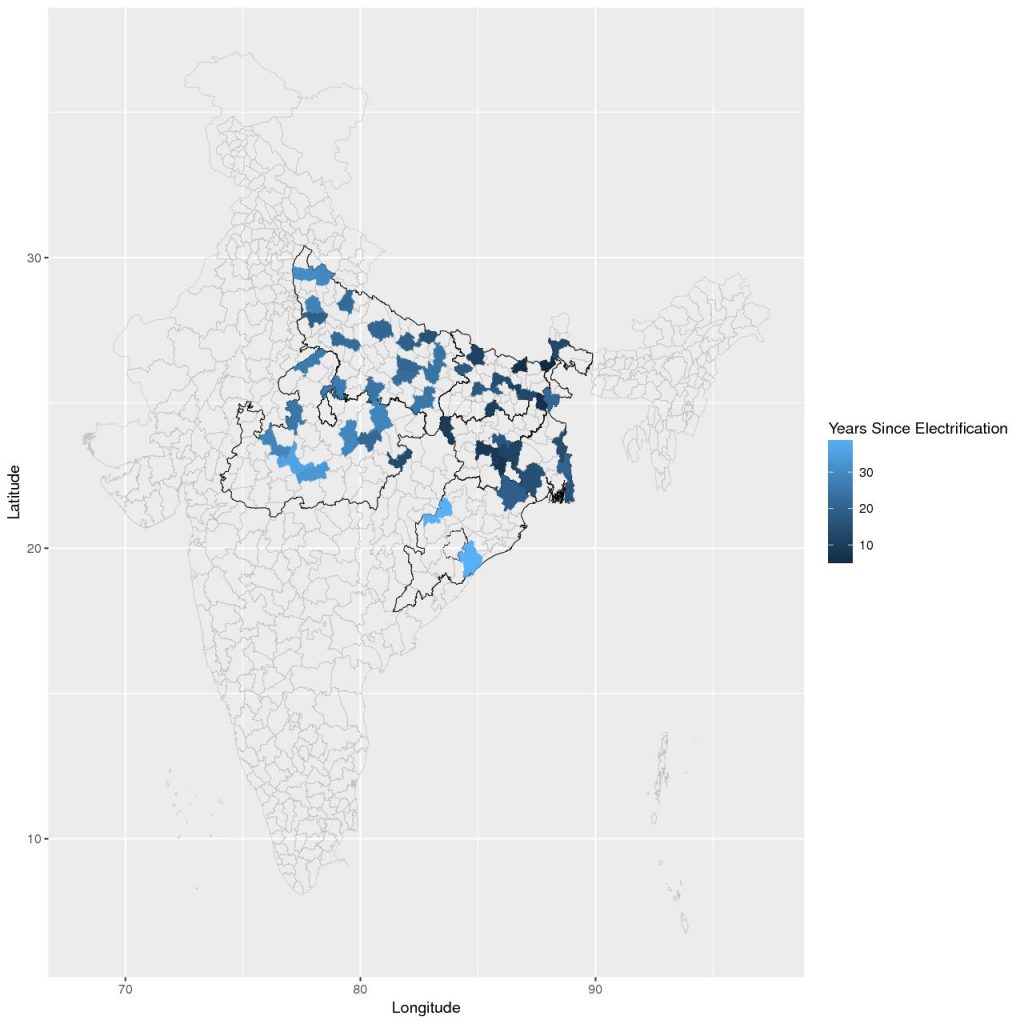Blog

Since 2005, India has embarked on an ambitious rural electrification drive, most recently known as the Deendayal Upadhyay scheme. The scheme has largely been successful, electrifying nearly 20 million households below India’s poverty line. However, these impressive numbers mask important variation in the quality of electrical service in these newly electrified villages. The fact that a village is electrified may not mean much if many households do not gain access to the electricity, if electricity service is limited to a low number of hours per day, or if the service is often interrupted.
The relationship between recent electrification and quality of service is ambiguous. On one hand, newly electrified villages should have state-of-the-art infrastructure, which would lead one to expect their service to be better than villages with rundown and outdated technology. This problem could be compounded by ineffective electricity distribution companies. On the other hand, villages that have been electrified longer have had more time to adopt the technology and may rely on it more, creating greater incentives for maintenance and upkeep.
New ISEP research (forthcoming in Energy for Sustainable Development) gives insight into the relationship between recent electrification and the quality of electrical service. Using data from six energy-poor states in India, Madhya Pradesh, Uttar Pradesh, Bihar, Jharkhand, West Bengal, and Odisha, Johannes Urpelainen (Johns Hopkins, SAIS) and I examine the relationship between the time of electrification and the household electrification rate, daily hours of electricity available, and monthly days without electricity for 594 electrified villages.
We find that on average, villages that were electrified more recently have lower quality service than those electrified earlier. Indeed, we find that newly electrified villages have lower household electrification rates, less hours of supply, and experience outages more frequently. This result holds even when controlling for confounders like village size, distance to large towns, and other unobserved characteristics of states.
Our finding has serious implications for economic development in rural India. Past research has shown that low quality of electricity service is associated with dissatisfaction with electricity service, and discourages households from connecting to the grid. Moreover, poor electrical service can translate to poor economic performance at both the firm and household level, reducing households’ income, and expenditures. Increasing the quality of service, then, should have a positive effect on the welfare of villagers in rural India.
Overall, our research suggests that the act of electrifying villages alone is insufficient. Along with the push to increase electrification rates in rural India, attention needs to be paid to ensuring that villages are gaining access to high quality service. To close the gap between recently electrified villages and those electrified in the past, policymakers should focus on providing high quality infrastructure as they continue to pursue greater rural electrification rates.
